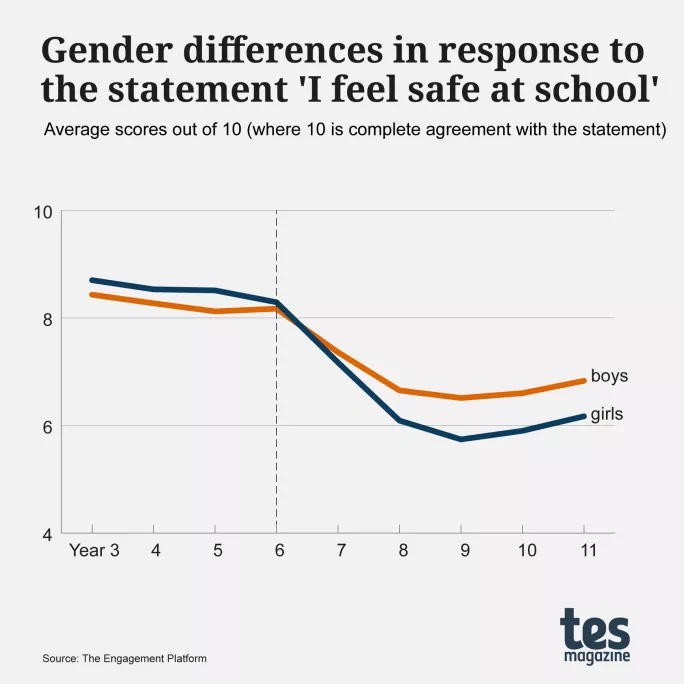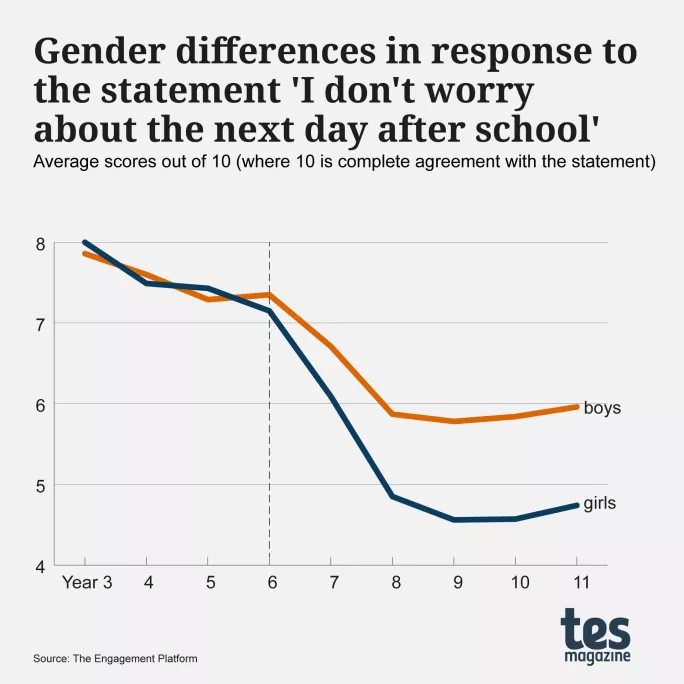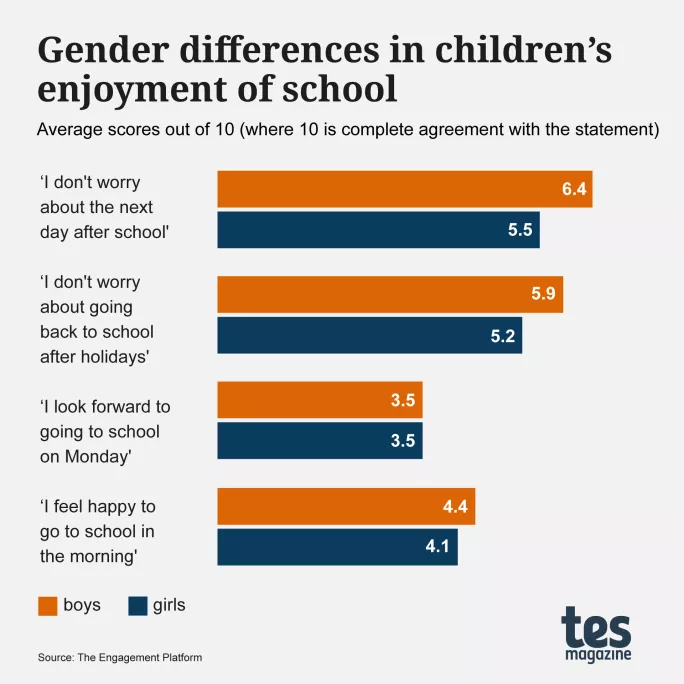Why girls need extra help with transition to secondary
Share
Why girls need extra help with transition to secondary
The education sector is never short of evidence, particularly around interventions and achievement.
We use this evidence to inform our strategies, approaches and - importantly - our future research to better our provision and ensure that all children and young people receive the highest-quality learning experience.
However, an aspect of this that seems fairly novel to the sector is forward-looking evidence on pupil engagement.
The biggest study on school pupil engagement
In an effort to contribute to this evidence base, we created the Research Commission on Engagement and Lead Indicators last term in partnership with Challenge Partners, the Confederation of School Trusts, the Association of School and College Leaders, the Reach Foundation and others.
With the aim of furthering the sector’s evidence base on the impact of pupil engagement for attendance and attainment, we launched the country’s largest study on school pupil engagement, surveying more than 100,000 students to date.
As we reflect on the halfway point in our research, our interim findings reveal a significant gender gap within the engagement of pupils in their education.
The gender gap in feeling safe
The data, gathered through The Engagement Platform (TEP), reveals four key disparities in engagement between girls and boys, particularly as they enter secondary education. They differ on cognitive, emotional and behavioural factors.
Firstly, our findings note that girls feel safer than boys during primary school. However, upon entering secondary school, both girls and boys experience a steep decline in feelings of safety.
By Year 8 girls’ sense of safety falls sharply below that of boys, and stays that way for the remainder of school.
Anxiety about school
Perhaps one of the most significant findings from the research is that girls are profoundly more likely to express worry about school than boys.
In response to the statement “I don’t worry about the next day after school”, girls report feeling far more anxious about school, scoring 5.5 compared with 6.4 for boys.
Likewise, girls are more likely than boys to experience worry about returning to school after the holidays.
As with feelings of safety, the rates of enjoyment of school between girls and boys remain broadly consistent and aligned during primary school.
Yet upon entering secondary, there is a spike in girls’ experiences of worry. They are more likely to worry about the next day in school.
This disparity between genders remains throughout secondary school. It demonstrates that the transition into secondary for girls has a more profound impact on engagement based on emotional factors.
Where the experiences of boys differ most notably from those of girls is around pupil-teacher and peer relationships. Our interim findings present boys as being more trusting of both teachers and their peers compared with girls.
When given the statement “I trust the teachers at school”, boys responded with an average score of 6.9 compared with 6.4 for girls. Likewise, boys are more likely to trust their peers (6.0) compared with girls (5.5).
While girls scored higher when the statement changed from “trust teachers” to “respect teachers”, it is important to recognise the gender divide that exists in pupil engagement.
- Student wellbeing: What’s really going on with teenage girls?
- School transition: The school beating the Year 6 to Year 7 transition trap
- Alex Quigley: Are we getting engagement all wrong?
But what does this all mean?
While our data has identified Year 7 as the key point when pupil engagement drops off, educators must also be aware of the gender gap that exists within this engagement and how it manifests itself.
We need to understand what is driving this gap and, specifically, what can be done to bridge it and ensure that all children - regardless of gender - can be supported throughout their transition into secondary school so their engagement can be maintained to protect their educational outcomes.
But exactly how this will work will be based on the findings from the second half of our research.
Take part in the research
If you are interested in supporting this research, we are offering schools, trusts and local authorities the opportunity to join the organisations taking part in the spring.
Organisations will have an opportunity to contribute to the data collection and receive their own individual report with findings specific to them, benchmarks and recommended best practice. Our full research report will be available in May 2025.
If you are interested in joining the research cohort, contact us at hello@impactedgroup.uk.
Professor John Jerrim is research director at ImpactEd Group
For the latest education news and analysis delivered every weekday morning, sign up for the Tes Daily newsletter







